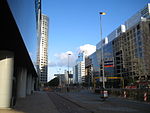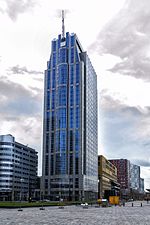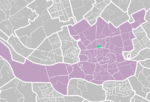Rotterdam Centraal station
1847 establishments in the NetherlandsJuxtaposed border controlsRailway stations in RotterdamRailway stations in the Netherlands opened in 1847Railway stations on the Hoekse Lijn ... and 6 more
Railway stations on the Oude LijnRailway stations on the Staatslijn IRailway stations opened in 1847Railway stations served by EurostarRandstadRail stations in RotterdamRotterdam Metro

Rotterdam Centraal railway station (Dutch pronunciation: [rɔtərˈdɑm sɛnˈtraːl]) is the main railway station of the city Rotterdam in South Holland, Netherlands. The station received an average of 110,000 passengers daily in 2007. The current station building, located at Station Square, was officially opened in March 2014.
Excerpt from the Wikipedia article Rotterdam Centraal station (License: CC BY-SA 3.0, Authors, Images).Rotterdam Centraal station
Proveniersplein, Rotterdam Noord
Geographical coordinates (GPS) Address Nearby Places Show on map
Geographical coordinates (GPS)
| Latitude | Longitude |
|---|---|
| N 51.924444444444 ° | E 4.4694444444444 ° |
Address
Rotterdam Centraal
Proveniersplein
3033 GJ Rotterdam, Noord
South Holland, Netherlands
Open on Google Maps










